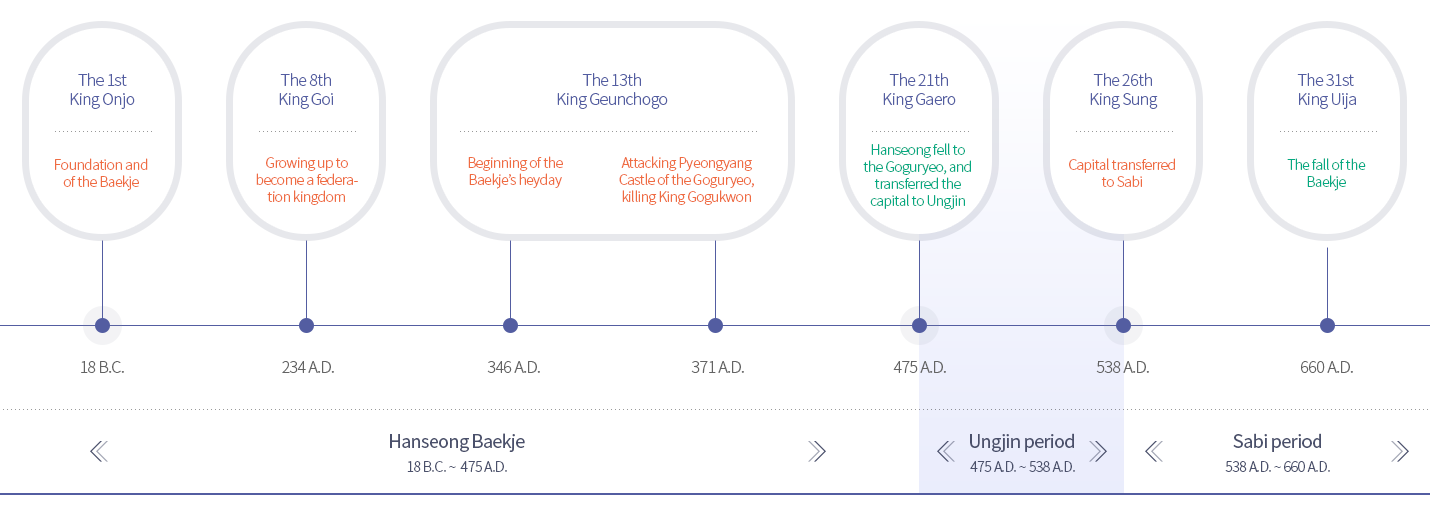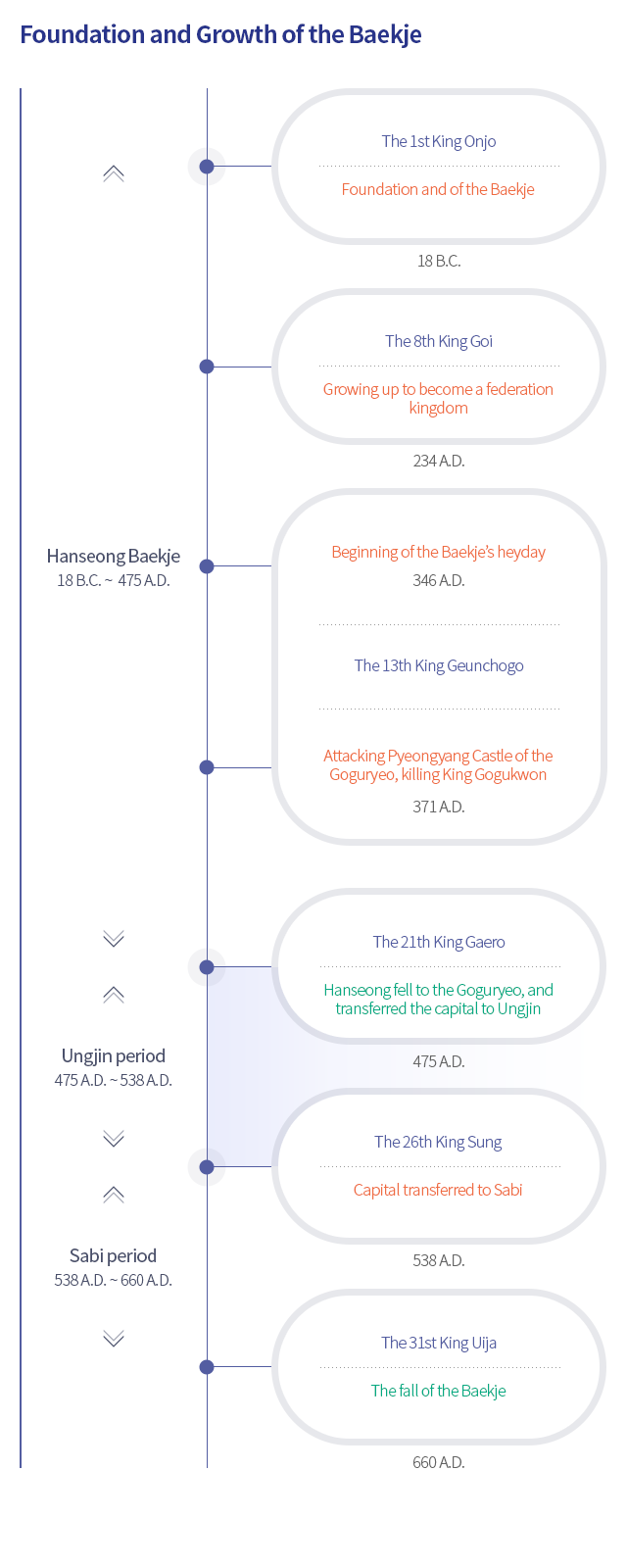Story
of
Hanseong

Foundation and Growth of the Baekje
In the Chronicles of the Three States, it is written that Onjo, the third son of King Dongmyeong of the Goguryeo, founded the Baekje in 18 B.C. It was from the era of the 8th King Goi (234~286) when the Baekje grew up to be a federation kingdom by annexing the surrounding small countries. King Goi attacked Naknang and expanded its territory. He graded the levels of government positions (16-level system), and made them wear different colored clothes according to rank. In addition, he installed 6 posts (Jwapyeong), an administrative structure, and arranged the law to organize a ruling system for the kingdom. The peak time of the Baekje was in the era of the 13th King Geunchogo. He annexed Mahan in the southern part of the Korean peninsula and expanded his influence to the Gaya area. In 371, he attacked Pyeongyang Castle, killed King Gogukwon in battle, and expanded the territory wide enough to present day Hwanghae-do and Jeolla-do areas. Baekje had confronted Goguryeo for more than 100 years from the late 4th century. The conflict was deepened by the southward expansion policy of King Gwanggaeto of the Goguyeo, and King Jangsu of the Goguryeo moved the capital to Pyeongyang in 427. In 475, he attacked the Baekje and killed King Gaero (455~475). As the capital was fallen, the Baekje hurriedly relocated to Ungjin.
Exchange with surrounding countries
-
Exchanges with the Goguryeo,
Shilla and GayaGoguryeo confronted the Baekje in earnest after destroying the Naknang and Daebang, and the conflict grew more severe after the death of Goguryeo’s King Gogukwon, and the fall of the Hanseong, Baekje. Shilla established diplomatic relations with the Baekje in earnest around the 4th century, and the relationship between these two countries was amicable in the 5th century. In 368, King Guenchogo sent 2 good horses to the Shilla, and in 433, the era of King Biu, the Baekje and Shilla formed a military alliance to stand together against the southward advance of the Goguryeo. In 475, when the Goguryeo attacked the capital of the Baekje, Hanseong, Shilla tried to help out the Baekje by sending troops. A number of countries in Gaya had an alliance with the Baekje. The Baekje maintained stable exchanges with Japan through the Gaya area, and the Gaya exchanged with China by receiving help from the Baekje.
-
Exchanges with Japan
Exchanges with Japan - The information is provided in the order of Trading countries and Trading goods Trading countries Trading goods Baekje → Japan - Diplomatic gifts: Seven-branched sword, seven-branched mirror, white cotton, checkerboard, five-colored silk
- Specialties: Books (Thousand Character Classic, translated books, etc.), hawk (falconry), iron products, metal works, image of Buddha, Buddha’s ashes, earthenware
Japan → Baekje - Diplomatic gifts: Yamyeongju (beads)
- Specialties: Beads, lumber
-
Exchange with China
Exchange with China - The information is provided in the order of Trading countries and Trading goods Trading countries Trading goods Baekje → China (Song) - Diplomatic gifts: Armor (painted gold), native horses
- Specialties: Yellow lacquer, ginseng, chestnuts, long-tailed chicken
China (Song) → Baekje - Diplomatic gifts: Weaponry (Yono), silk, books, silk robes
- Specialties: Chinese ceramics, silk, tea
![[China] Belt ornament - Mongchontoseong](/site/hanseong/images/contents/cts3534_img04.png)
[China] Belt ornament - Mongchontoseong
![[China] Sheep-shaped celadon – Stone chamber No. 2 of Beopcheon-ri, Wonju](/site/hanseong/images/contents/cts3534_img05.png)
[China] Sheep-shaped celadon – Stone chamber No. 2 of Beopcheon-ri, Wonju
Source : SEOUL BAEKJE MUSEUM


